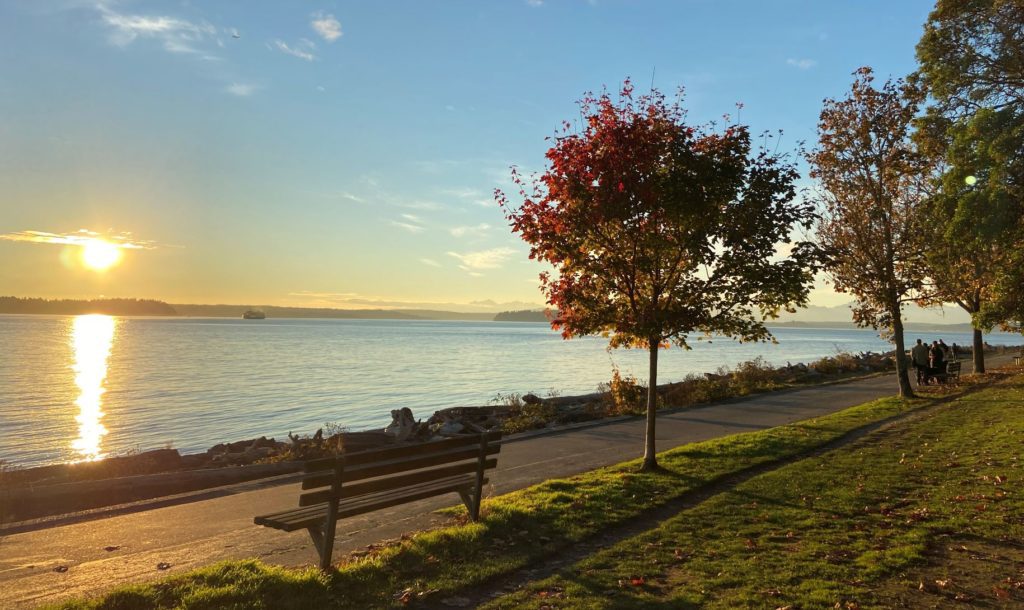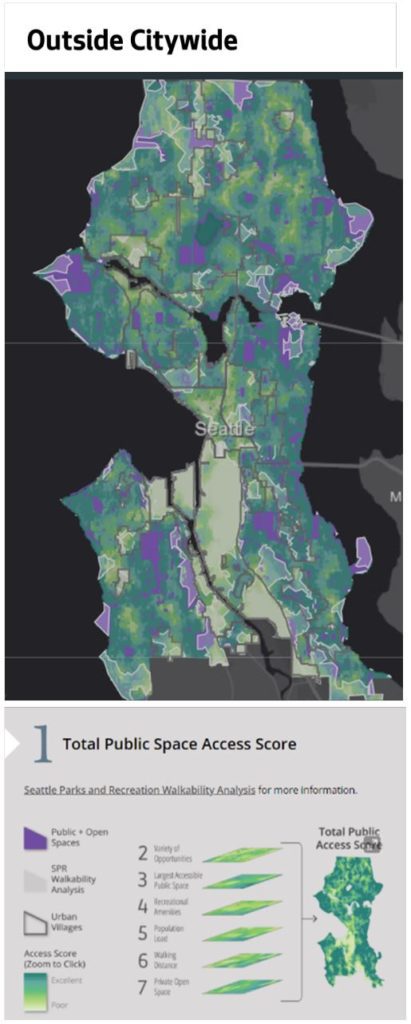
By Todd Burley and Kathleen Conner

The ideal of being able to walk to the grocery store, library, school, barber shop, and park is not just a throwback to the past, but a value that the City of Seattle holds today. Seattle’s Comprehensive Plan, a long-term planning document, seeks to intentionally create just that sort of a community. But how do you measure it?
Real estate companies use Walk Scores to assess this “walkability” access to services from a home. And organizations like the Trust for Public Land (TPL) have developed the 10-Minute Walk to a Park metric for cities across the country.

Seattle is blessed with a great parks and recreation system of over 485 parks encompassing 6,423 acres. According to TPL, 96% of Seattle’s households live within a 10-minute walk to a park, or about a half-mile. Their figure includes all publicly accessible open space, such as Seattle Center or SDOT’s street ends, in addition to Seattle Parks and Recreation’s property. Future figures may be higher, since they will include all public schoolgrounds, which are open to the public outside of school hours.
Seattle Parks and Recreation (SPR) has used a narrower set of requirements to measure walkability. In the adopted 2017 Parks and Open Space Plan, SPR determined that 94% of households in Seattle live within a 10-minute walk to a SPR-owned park or open space. Much of the same considerations as TPL’s figure are included, such as a 10,000 square foot minimum for parks.

To incorporate equity and access into planning decisions, Seattle’s Office of Planning and Community Development (OPCD) created the Outside Citywide interactive map tool. It examines how well different areas of the city are being served by our current system based on the quantity, sizes, types, features, and walking distances of nearby public spaces. Outside Citywide creates a “public space access score” based on six different factors, including SPR’s walkability metric.

In 2020, SPR and OPCD collaborated to align our analyses to create two standard citywide walkability metrics:
- Walkability to SPR-owned land
This analysis uses the adopted 2017 Parks and Open Space Plan that identifies a walkability metric to SPR-owned land only. This is currently the data used in the Comprehensive Plan and is what Seattle reports on to Washington State in accordance with the Growth Management Act. - Walkability to all public outdoor spaces. Recognizing there are other publicly-owned open spaces not owned by SPR, we are also developing a new citywide walkability metric for the Equitable Development Monitoring Program. This metric will include all publicly-owned, accessible, and free land. OPCD and SPR will refine this metric for the Mayor’s Performance Seattle dashboard and the updates to the Comprehensive Plan and the Parks and Open Spaces Plan in 2023.
The goal of both metrics is not to achieve 100% walkability, but rather to identify where to invest public resources to ensure those in our community that are disproportionately impacted by lack of nearby parks and open space and environmental injustices receive the additional investments that will benefit their health and well-being.
Seattle is dedicated to setting the bar high for equitable access to parks and open spaces in our city. We are committed to reducing disparities in our community, which means we may not get to a 100% walkability figure. However, these maps and tools will allow decision makers in our city to make informed decisions based on equity, and that is our true goal.
Article written by Todd Burley, Sustainability Advisor and Kathleen Conner, Planning Manager.